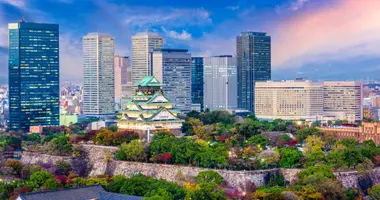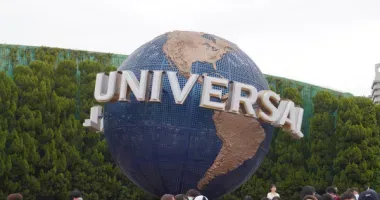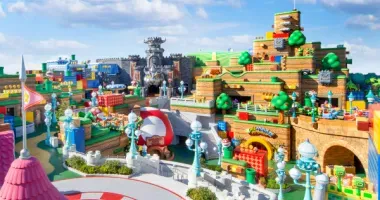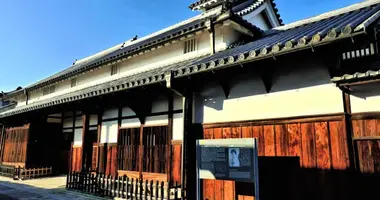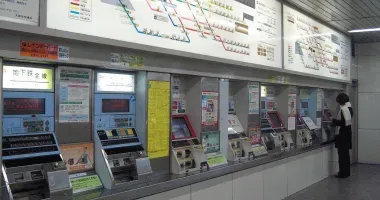Nakanoshima Guide: Exploring Osaka's Cultural and Financial Island
- Published on : 28/06/2024
- by : Japan Experience
- Youtube
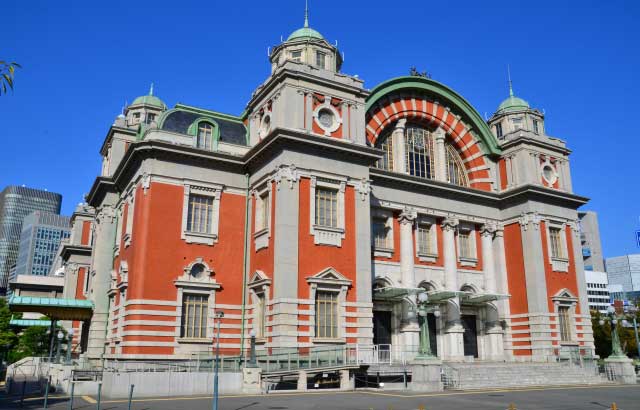
Osaka City Central Public Hall
Nestled in the heart of Osaka, Nakanoshima stands as a unique island that embodies the city's rich history and modern vibrancy. This 3-kilometer-long sandbank, surrounded by the Dojimagawa and Tosaborigawa rivers, has evolved from a humble trading post to a thriving cultural and financial hub. As you explore Nakanoshima, you'll encounter a captivating blend of historical architecture, world-class museums, lush green spaces, and cutting-edge office buildings. Whether you're an art enthusiast, a history buff, or simply seeking a peaceful urban oasis, Nakanoshima offers a diverse array of experiences that showcase the best of Osaka's past and present.
Understanding Nakanoshima: A unique island in the heart of Osaka
Nakanoshima's distinctive geography sets it apart as a true island within the bustling metropolis of Osaka. Measuring approximately 3 kilometers in length and 50 hectares in area, this slender strip of land is embraced by the Dojimagawa River to the north and the Tosaborigawa River to the south. Despite its compact size, Nakanoshima plays an outsized role in Osaka's urban landscape.
The island's strategic location at the confluence of these waterways has shaped its development over centuries. Today, Nakanoshima serves as a microcosm of Osaka itself, blending administrative, commercial, and cultural functions into a harmonious whole. As you traverse the island, you'll notice how seamlessly it connects to the surrounding city via numerous bridges, making it easily accessible yet distinct in character.
What truly sets Nakanoshima apart is its ability to offer a tranquil respite from the urban bustle while remaining at the very center of city life. The island's well-designed promenades and green spaces provide visitors with breathing room and scenic views, all within sight of Osaka's impressive skyline. This juxtaposition of nature and urbanity creates a unique atmosphere that captivates both residents and tourists alike.
Historical significance: From "kitchen of Japan" to modern-day hub
Nakanoshima's history is deeply intertwined with Osaka's rise as a commercial powerhouse. During the Edo period (1603-1867), the island earned its reputation as part of the "kitchen of Japan" due to its strategic importance in the nation's rice trade. Meiji era saw wealthy merchants and powerful figures from across Japan maintaining kurayashiki - combined warehouses, residences, and offices - on Nakanoshima. These establishments stored and traded rice and other foodstuffs, making the island a vital center of commerce.
As Japan modernized in the late 19th and early 20th centuries, Nakanoshima's role evolved. The island became a focal point for Osaka's transformation into a modern metropolis. During this period, many of the island's iconic buildings were constructed, including the Osaka Prefectural Nakanoshima Library (1904) and the Osaka City Central Public Hall (1918). These structures, with their Western-influenced architecture, symbolized Japan's rapid modernization and Osaka's growing importance as a cultural and economic center.
In the post-war era, Nakanoshima solidified its position as Osaka's administrative and financial heart. The island became home to Osaka City Hall, the Bank of Japan Osaka Branch, and numerous corporate headquarters. This concentration of power and finance has continued to shape Nakanoshima's character, making it a crucial nexus for decision-making and economic activity in the Kansai region.
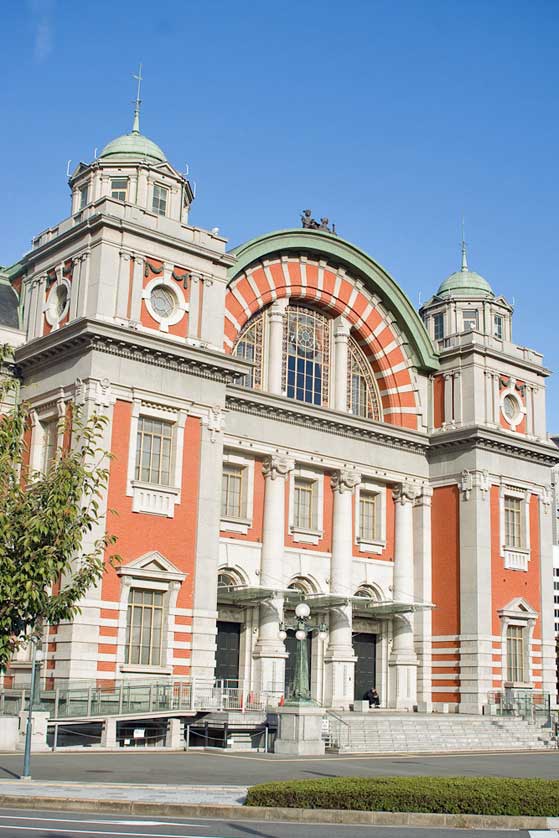
Architectural wonders: A journey through time and style
Nakanoshima's architectural landscape offers a captivating journey through different eras and styles, reflecting the island's evolution over time. As you explore, you'll encounter a harmonious blend of historic buildings and modern structures that tell the story of Osaka's development.
One of the most striking landmarks is the Osaka City Central Public Hall, a magnificent neo-Renaissance building completed in 1918. Its red brick façade, adorned with statuary and arched entryways, stands as a testament to the Western influences that shaped Japan during the Taisho era. The hall's interior, with its preserved Taisho-era design and fixtures, offers visitors a glimpse into the past.
Nearby, the Osaka Prefectural Nakanoshima Library, built in 1904, showcases elements of Greek revival architecture. Its imposing columns and domed atrium create a sense of grandeur befitting its role as a center of learning. Both these buildings are not just architectural marvels but also important cultural heritage sites that continue to serve the public today.
Contrasting with these historical structures are modern architectural gems like the Osaka Science Museum and the National Museum of Art, Osaka. The latter, in particular, stands out with its innovative design featuring stainless steel tubes that seem to emerge from underground, symbolizing the museum's subterranean galleries. This juxtaposition of old and new creates a dynamic visual dialogue that reflects Nakanoshima's ongoing evolution.
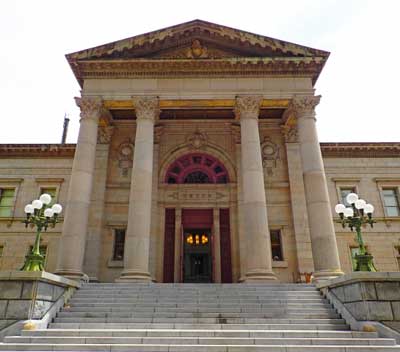
Osaka Prefectural Library (中之島図書館)
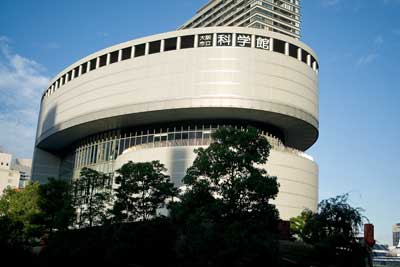
Osaka Science Museum
Cultural attractions: Museums, libraries, and public spaces
Nakanoshima is a treasure trove of cultural attractions that cater to diverse interests. The island's museums, in particular, offer world-class exhibitions and unique experiences for art and science enthusiasts alike.
The National Museum of Art, Osaka is a must-visit for contemporary art lovers. Despite its underground location, the museum houses an impressive collection of post-war art from Japan and abroad. Regular special exhibitions showcase works by both established and emerging artists, making each visit a new experience.
Science enthusiasts will find plenty to explore at the Osaka Science Museum. With its hands-on exhibits and planetarium, the museum offers engaging experiences for visitors of all ages. It's an excellent place to learn about various scientific principles and their applications in everyday life.
For those interested in ceramics, the Museum of Oriental Ceramics houses a remarkable collection of fine Asian pottery. The museum's permanent display is often complemented by special collections, providing a comprehensive look at the rich tradition of ceramic art in East Asia.
Beyond museums, Nakanoshima's public spaces offer opportunities for relaxation and cultural experiences. The Nakanoshima Library, with its impressive architecture and vast collection of books, invites visitors to immerse themselves in literature and research. The library's central hall, with its domed atrium, is a prime example of Meiji-era architecture and worth a visit in its own right.
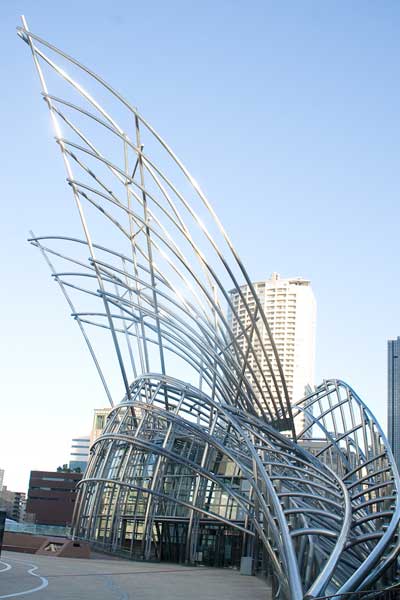
Osaka National Museum of Art, Nakanoshima, Osaka
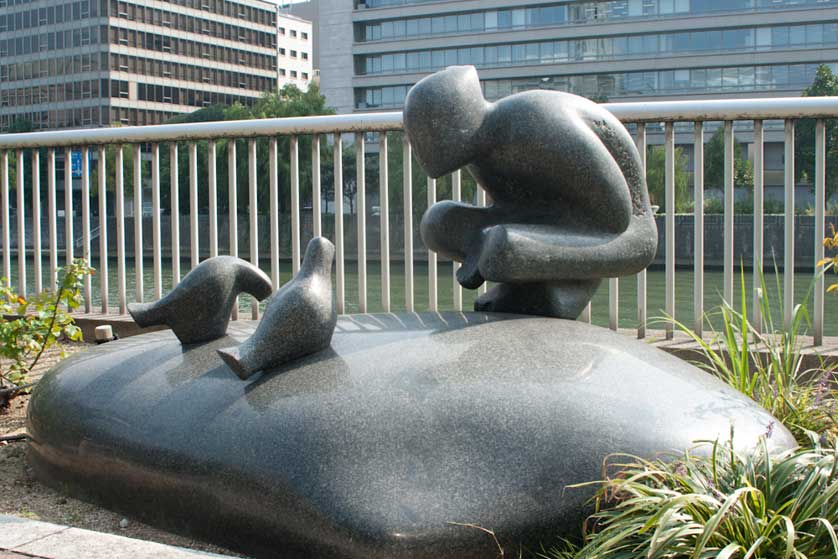
Contemporary Art, Nakanoshima
Natural beauty: Nakanoshima Park and Rose Garden
Amidst the urban landscape of Nakanoshima, Nakanoshima Park stands as a verdant oasis that offers respite from the city's hustle and bustle. Opened in 1891 as Osaka's first public park, this green space has been a beloved recreational area for over a century.
The park stretches along the eastern end of the island, providing scenic views of the surrounding rivers and cityscape. Its well-manicured lawns, tree-lined paths, and seasonal flower beds create a picturesque setting for leisurely strolls, picnics, or simply relaxing on a bench while watching the world go by.
One of the park's highlights is the Nakanoshima Rose Garden, a beautiful space that bursts into color twice a year. In mid-May and mid-October, visitors can enjoy the sight and fragrance of over 3,700 rose bushes representing about 310 different species. The garden is meticulously arranged, with roses organized by the year they were created, offering a living timeline of rose cultivation.
Beyond its aesthetic appeal, Nakanoshima Park plays a vital role in the cultural life of Osaka. It frequently hosts outdoor events, exhibitions, and seasonal festivals, providing a dynamic public space where nature and culture intersect. During the warmer months, the park becomes a popular spot for outdoor dining, with food stalls and beer gardens adding to its lively atmosphere.
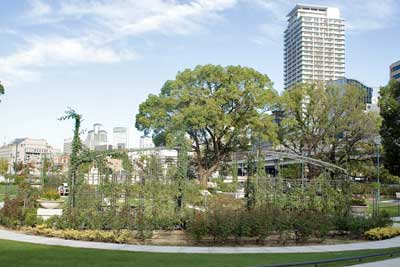
Nakanoshima Park, Osaka
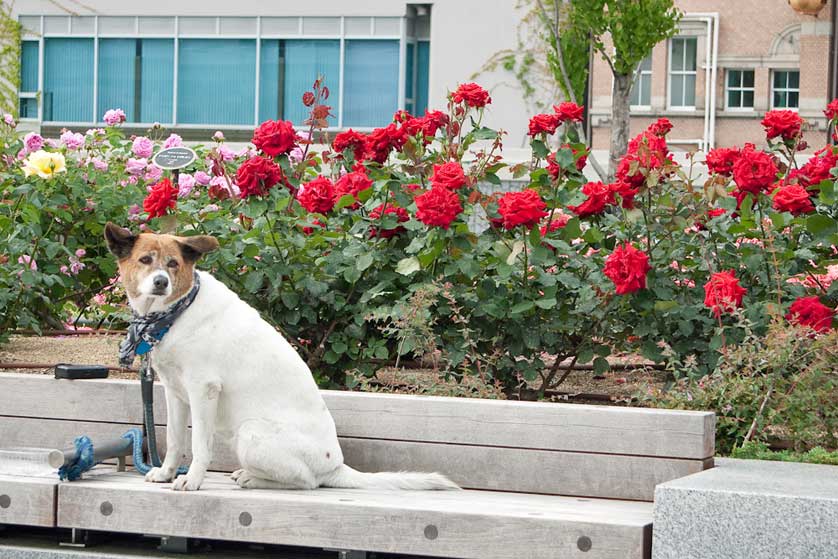
Nakanoshima Rose Garden
Dining and entertainment: Riverside experiences and seasonal events
Nakanoshima offers a diverse array of dining and entertainment options that make the most of its unique riverside setting. From casual cafes to upscale restaurants, visitors can find a variety of culinary experiences to suit their tastes and budgets.
One standout dining venue is Garb Weeks, a restaurant that combines quality cuisine with stunning riverside views. While not quite reaching Michelin-star status, it offers a constantly changing menu of ample portions at reasonable prices, making it a popular choice for both locals and tourists.
For a more casual experience, the Riverside Beer Garden is a seasonal favorite. Open during the warmer months on the north side of the rose garden, it offers a relaxed atmosphere where visitors can enjoy Korean barbecue, Japanese curries, and an all-you-can-drink selection of beverages while taking in the riverside scenery.
Nakanoshima's entertainment calendar is punctuated by seasonal events that bring the island to life throughout the year. The Nakanoshima Festival, held annually in May, transforms the area into a vibrant cultural hub with movie screenings, live performances, and food stalls offering local specialties.
During the winter months, the Osaka Hikari Renaissance illumination event turns Nakanoshima into a magical wonderland of lights. The event features stunning light installations and 3D projections on historical buildings, creating a breathtaking nighttime spectacle that draws visitors from far and wide.
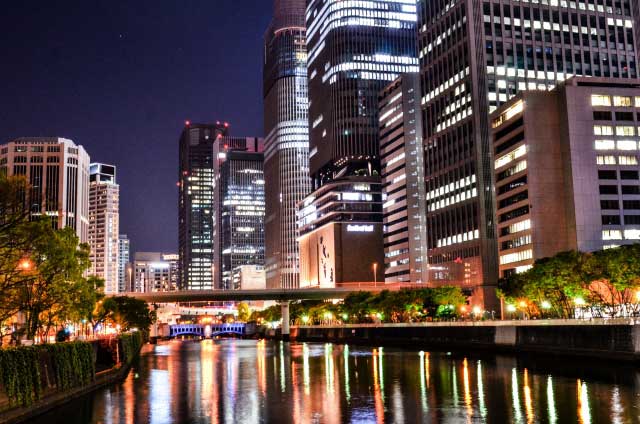
Night view, Nakanoshima, Osaka
Practical information: Access, transportation, and nearby accommodations
Reaching Nakanoshima is convenient thanks to its central location and excellent transportation links. The island is well-served by the Osaka subway system, with several stations providing easy access:
- Yodoyabashi Station (Midosuji Line and Keihan Line)
- Naniwabashi Station (Keihan Nakanoshima Line)
- Watanabebashi Station (Keihan Nakanoshima Line)
- Nakanoshima Station (Keihan Nakanoshima Line)
- Oebashi Station (Keihan Nakanoshima Line)
For those coming from further afield, Nakanoshima is just a short distance from major transportation hubs. It's approximately a 15-minute walk south from Umeda Station, one of Osaka's main railway terminals.
Once on the island, most attractions are within walking distance of each other. However, for those who prefer not to walk, there are boat tours that offer a unique perspective on Nakanoshima and its surroundings. These cruises typically depart every 30 minutes from 5 p.m. to 11 p.m. between March and December, providing a pleasant way to see the island from the water.
For Nakanoshima Hotels, visitors have several excellent options:
- The Rihga Royal Hotel Nakanoshima: A luxury hotel with over 900 rooms
- Conrad Osaka: A high-end hotel offering panoramic city views
- Hotel NCB: A 3-star option for budget-conscious travelers
- Apa Hotel Osaka Higobashi Ekimae: A comfortable mid-range choice
With its rich history, diverse attractions, and convenient Nakanoshima Access, this unique island offers a perfect blend of culture, nature, and urban experiences. Whether you're a first-time visitor to Osaka or a returning traveler, Nakanoshima promises a memorable journey through the heart of this vibrant city.
Books on Japan & Japanese Culture


